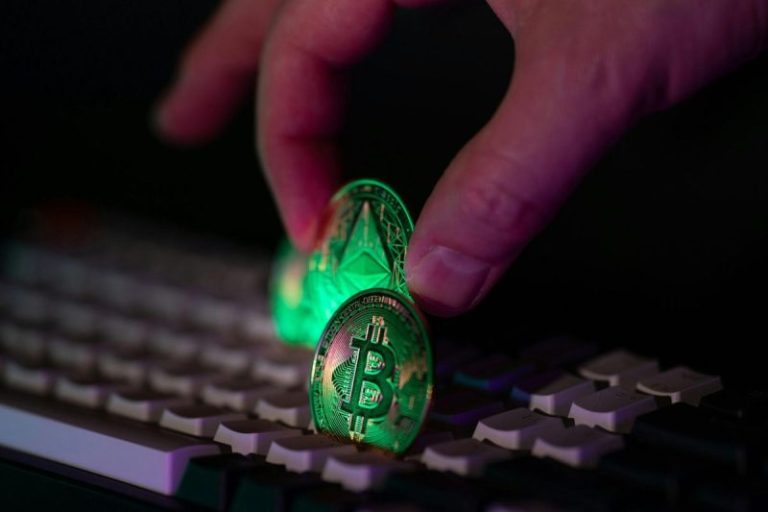TSX-V: WLR
Frankfurt: 6YL
CMC Metals Ltd. (TSXV: CMB) (Frankfurt: ZM5P) (‘CMC’ or the ‘Company’) is pleased to announce that it has settled and extinguished $77,600 of outstanding debt (the ‘Debt’) through the issuance of common shares of the Company (the ‘Shares’).
In accordance with the settlement of debt (the ‘Debt Settlement‘), the Company will issue 405,714 common shares to one non-arm’s length creditor of the Company (the ‘Non-Arm’s Length Creditor‘) and 333,333 common shares to one arm’s length creditor (the ‘Arm’s Length Creditor‘) at a deemed price of $0.105 per Share. The Company has entered into administrative and professional services agreements provided between the periods of April to August 2025, inclusive, with the Non-Arm’s Length Creditor for services provided and services agreements for the period April to October 2025, inclusive with the Arm’s Length Creditor.
The Company chose to settle and extinguish the Debt through the issuance of Shares to preserve cash and improve the Company’s balance sheet. The Debt Settlement is subject to approval by the TSX Venture Exchange (the ‘TSXV‘). No new insiders will be created, nor will any change of control occur as a result of the issuance of the Shares.
The shares issued are subject to a four month hold period, which will expire on a date that is four months and one day from the date of issuance.
As certain insiders are party to the Agreement for $35,000 or 333,333 shares, it may be considered a ‘related party transaction’ under Multilateral Instrument 61-101 Protection of Minority Security Holders in Special Transactions (‘MI 61-101’) and the TSXV. The Company is relying on the exemptions from the formal valuation and the minority shareholder approval requirements of MI-61-101 contained in section 5.5 (a) and Section 5.7 (1)(a) as the fair market value of the common shares being issued to insiders in connection with the Service Shares does not exceed 25% of the market capitalization of the Company, as determined in accordance with MI 61-101.
Kevin Brewer, President and CEO of Walker Lane Resources Ltd. noted ‘We have significantly reduced our debt load, and minimized operating costs and expenditures, to deal with the challenges our sector has faced in 2024. The participation of my own company and a primary service company is testimony to the belief of myself and the Board that WLR has significant opportunities to enhance shareholder value in the near future.’
About Walker Lane Resources Ltd.
Walker Lane Resources Ltd. is a growth-stage exploration company focused on the exploration of high-grade gold, silver and polymetallic deposits in the Walker Lane Gold Trend District in Nevada and the Rancheria Silver District in Yukon/B.C. and other property assets in Yukon. The Company intends to initiate an aggressive exploration program to advance the Tule Canyon (Walker Lane, Nevada) and Amy (Rancheria Silver District, B.C.) projects through drilling programs with the aim of achieving resource definition in the near future.
On behalf of the Board:
‘Kevin Brewer’
Kevin Brewer, President, CEO and Director
Walker Lane Resources Ltd.
Cautionary and Forward Looking Statements
This press release and related figures, contain certain forward-looking information and forward-looking statements as defined in applicable securities laws (collectively referred to as forward-looking statements). These statements relate to future events or our future performance. All statements other than statements of historical fact are forward-looking statements. The use of any of the words ‘anticipate’, ‘plans’, ‘continue’, ‘estimate’, ‘expect’, ‘may’, ‘will’, ‘project’, ‘predict’, ‘potential’, ‘should’, ‘believe’ ‘targeted’, ‘can’, ‘anticipates’, ‘intends’, ‘likely’, ‘should’, ‘could’ or grammatical variations thereof and similar expressions is intended to identify forward-looking statements. These statements involve known and unknown risks, uncertainties and other factors that may cause actual results or events to differ materially from those anticipated in such forward-looking statements. These statements speak only as of the date of this presentation. These forward-looking statements include, but are not limited to, statements concerning: our strategy and priorities including certain statements included in this presentation are forward-looking statements within the meaning of Canadian securities laws, including statements regarding the Tule Canyon, Cambridge, Silver Mountain, and Shamrock Properties in Nevada (USA), and its properties including Silverknife and Amy properties in British Columbia, the Silver Hart, Blue Heaven and Logjam properties in Yukon and the Bridal Veil property in Newfoundland and Labrador all of which now comprise the mineral property assets of WLR. WLR has assumed other assets of CMC Metals Ltd. including common share holdings of North Bay Resources Inc. (OTC-US: NBRI) and all conditions and agreements pertaining to the sale of the Bishop mill gold processing facility and remain subject to the condition of the option of the Silverknife property with Coeur Mining Inc. (TSX:CDE). These forward-looking statements reflect the Company’s current beliefs and are based on information currently available to the Company and assumptions the Company believes are reasonable. The Company has made various assumptions, including, among others, that: the historical information related to the Company’s properties is reliable; the Company’s operations are not disrupted or delayed by unusual geological or technical problems; the Company has the ability to explore the Company’s properties; the Company will be able to raise any necessary additional capital on reasonable terms to execute its business plan; the Company’s current corporate activities will proceed as expected; general business and economic conditions will not change in a material adverse manner; and budgeted costs and expenditures are and will continue to be accurate.
Actual results and developments may differ materially from results and developments discussed in the forward-looking statements as they are subject to a number of significant risks and uncertainties, including: public health threats; fluctuations in metals prices, price of consumed commodities and currency markets; future profitability of mining operations; access to personnel; results of exploration and development activities, accuracy of technical information; risks related to ownership of properties; risks related to mining operations; risks related to mineral resource figures being estimates based on interpretations and assumptions which may result in less mineral production under actual conditions than is currently anticipated; the interpretation of drilling results and other geological data; receipt, maintenance and security of permits and mineral property titles; environmental and other regulatory risks; changes in operating expenses; changes in general market and industry conditions; changes in legal or regulatory requirements; other risk factors set out in this presentation; and other risk factors set out in the Company’s public disclosure documents. Although the Company has attempted to identify significant risks and uncertainties that could cause actual results to differ materially, there may be other risks that cause results not to be as anticipated, estimated or intended. Certain of these risks and uncertainties are beyond the Company’s control. Consequently, all of the forward-looking statements are qualified by these cautionary statements, and there can be no assurances that the actual results or developments will be realized or, even if substantially realized, that they will have the expected consequences or benefits to, or effect on, the Company.
The information contained in this presentation is derived from management of the Company and otherwise from publicly available information and does not purport to contain all of the information that an investor may desire to have in evaluating the Company. The information has not been independently verified, may prove to be imprecise, and is subject to material updating, revision and further amendment. While management is not aware of any misstatements regarding any industry data presented herein, no representation or warranty, express or implied, is made or given by or on behalf of the Company as to the accuracy, completeness or fairness of the information or opinions contained in this presentation and no responsibility or liability is accepted by any person for such information or opinions. The forward-looking statements and information in this presentation speak only as of the date of this presentation and the Company assumes no obligation to update or revise such information to reflect new events or circumstances, except as may be required by applicable law. Although the Company believes that the expectations reflected in the forward-looking statements and information are reasonable, there can be no assurance that such expectations will prove to be correct. Because of the risks, uncertainties and assumptions contained herein, prospective investors should not read forward-looking information as guarantees of future performance or results and should not place undue reliance on forward-looking information. Nothing in this presentation is, or should be relied upon as, a promise or representation as to the future. To the extent any forward-looking statement in this presentation constitutes ‘future-oriented financial information’ or ‘financial outlooks’ within the meaning of applicable Canadian securities laws, such information is being provided to demonstrate the anticipated market penetration and the reader is cautioned that this information may not be appropriate for any other purpose and the reader should not place undue reliance on such future-oriented financial information and financial outlooks. Future-oriented financial information and financial outlooks, as with forward-looking statements generally, are, without limitation, based on the assumptions and subject to the risks set out above. The Company’s actual financial position and results of operations may differ materially from management’s current expectations and, as a result, the Company’s revenue and expenses. The Company’s financial projections were not prepared with a view toward compliance with published guidelines of International Financial Reporting Standards and have not been examined, reviewed or compiled by the Company’s accountants or auditors. The Company’s financial projections represent management’s estimates as of the dates indicated thereon.
SOURCE Walker Lane Resources Ltd
View original content to download multimedia: http://www.newswire.ca/en/releases/archive/December2025/17/c7013.html
News Provided by Canada Newswire via QuoteMedia










